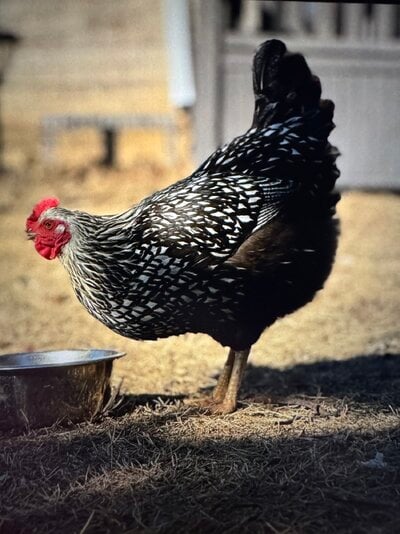RipperRanch
Hatching
- Mar 28, 2025
- 5
- 4
- 6
We have had chickend for about 3 years now and this year is my first time hatching out our own and I'm curious if it is possible to narrow down which chick came from which hen.
We have a flock of 18 and only one rooster a Lavender Orpington. I got twelve eggs in the incubator, 8 seemed viable when candled and so far 6 have successfully hatched (one still breaking out and one with no breaks).
Our hens include -
Chick 1,2 & 3 all have feathered feet/shanks. Chick 1 has a reddish brown head and black body while the other two are black with white.
Chick 4 is the orpington but I included pics of it anyways and the corresponding egg.
Chick 5 the egg I suspect is from one of our ISA browns but not 100%. Egg was very large and had some wrinkling and one of our ISAs almost always has wrinkling on her eggs.
Chick 6 came from a baby blue egg so mother could be the legbar? Does the spot on the head indicate its a roo? Would it be the same if mother was our easter egger who lays blue eggs? The coloring on this one is cool, lots of brown, black and gray.
Thank you for lending any ideas or thoughts!
chick 1

Chick 2

Chick 3

Orpington baby

Chick 5

Chick 6

Corresponding eggs

We have a flock of 18 and only one rooster a Lavender Orpington. I got twelve eggs in the incubator, 8 seemed viable when candled and so far 6 have successfully hatched (one still breaking out and one with no breaks).
Our hens include -
- Four Olive eggers - clean feet, pea combs
- Two Isa browns
- One Partridge
- One sold to me as an Olive egger that looks identical to a Salmon Favorelle. She has feathered feet

- One Delaware
- One Lavender Orpington
- One Easter Egger (Blue eggs) clean feet
- One Cream Crested Legbar
- Two Dark Brahmas
- Two Turkens
- 1 Mosaic (that is what she was sold to me as but I think she looks like a silver laced wyandotte?)

Chick 1,2 & 3 all have feathered feet/shanks. Chick 1 has a reddish brown head and black body while the other two are black with white.
Chick 4 is the orpington but I included pics of it anyways and the corresponding egg.
Chick 5 the egg I suspect is from one of our ISA browns but not 100%. Egg was very large and had some wrinkling and one of our ISAs almost always has wrinkling on her eggs.
Chick 6 came from a baby blue egg so mother could be the legbar? Does the spot on the head indicate its a roo? Would it be the same if mother was our easter egger who lays blue eggs? The coloring on this one is cool, lots of brown, black and gray.
Thank you for lending any ideas or thoughts!
chick 1
Chick 2
Chick 3
Orpington baby
Chick 5
Chick 6
Corresponding eggs




